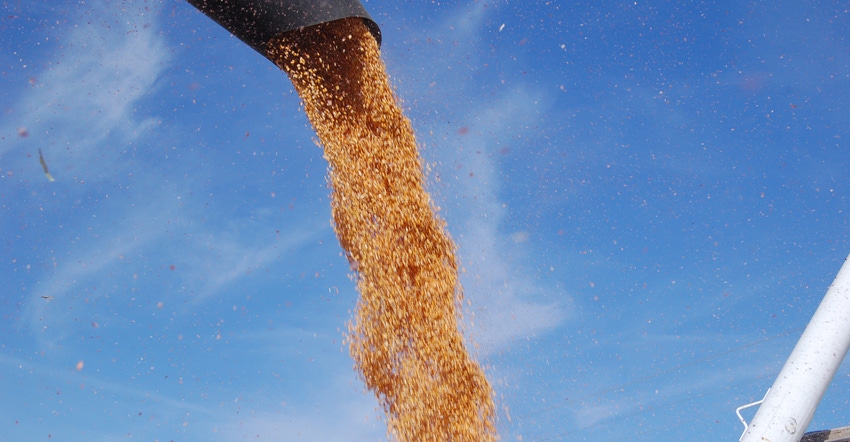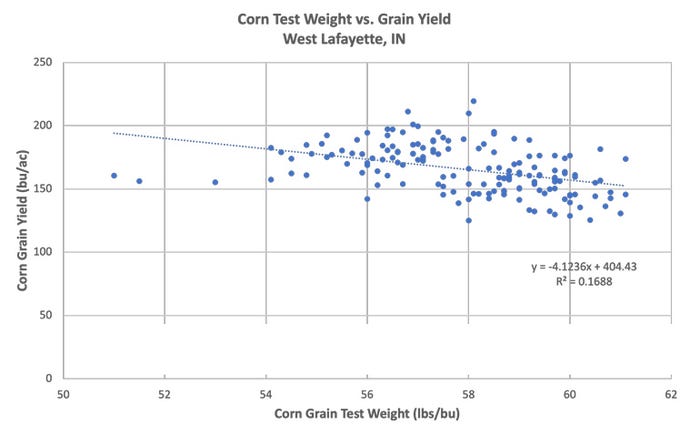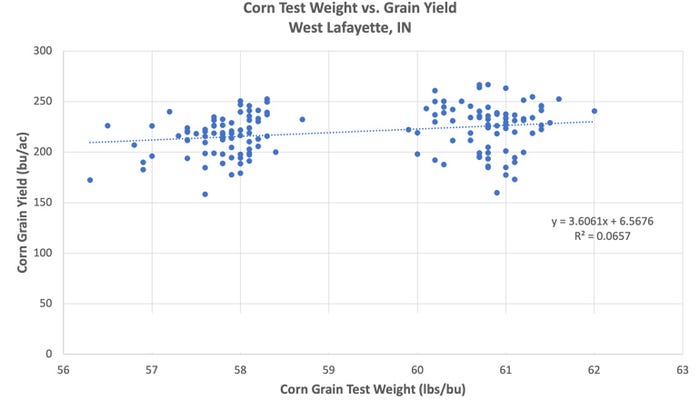September 1, 2022

Although yield is usually at the forefront of corn farmers’ minds during harvest, another popular discussion topic each fall is test weight. Grain test weight is often discussed when determining how well someone’s corn did. However, this number can be confusing, especially in relation to yield.
Grain test weight is used as a grain quality measurement. It’s identified as the volumetric weight of grain and is expressed in pounds per bushel. Test weight is based on the official volumetric bushel measurement of 1.244 cubic feet.
In addition, USDA defines the minimum allowable test weight as 56 pounds per bushel for No. 1 yellow corn and 54 pounds per bushel for No. 2 yellow corn. Corn grain in the U.S. is marketed specific to a 56-pound bushel, regardless of test weight. Furthermore, since test weight is dependent on grain moisture, grain buyers will pay based on “dry” bushels at 15% to 15.5% grain moisture.
Farmers are often concerned with low test weight because that means local grain buyers may discount the market grain price paid per bushel. In addition, if you deliver a semiload of low test-weight grain, say 52 pounds per bushel, then that specific load would contain fewer 56-pound bushels. You would be paid less for the load on a per-weight basis. However, if you deliver a semiload of high test-weight corn, say 58 pounds per bushel, that load would contain more 56-pound bushels. You would be paid more for the load on a per-weight basis.
This concern among farmers regarding test weight often drives this question: “If my corn yielded well, shouldn’t I also have high test weight?” The short answer is no, not always. There is very little evidence that high corn yield equates to high test weight.
Test weight and yield
Examples of the lack of a true relationship between grain test weight and corn yield can be graphed out. The data for these graphs was collected from multiple corn research trials from Purdue University in 2021. In the top graph, there seems to be a slight negative relationship between grain test weight and yield, whereas in the bottom graph, there seems to be a slight positive relationship between grain test weight and yield.


In addition, both graphs produce trend lines with low R2 values of 0.17 and 0.07, respectively. This statistical calculation indicates that the equation and trend line do not do a good job in explaining the variability of the data.
In other words, these graphs highlight both the variability and overall lack of relationship between grain test weight and yield. In many instances, similar test weight values can exist across a wide range of hybrid genetics and environmental conditions.
In addition, low-yielding corn with smaller kernels can sometimes result in a higher test weight than higher-yielding corn with larger kernels. That’s because for a hybrid with smaller kernels, more kernels “fit” within the volumetric measurement of a bushel.
So, just because your corn yielded poorly does not necessarily mean test weight is low.
Quinn is a Purdue Extension corn specialist. Email him at [email protected] or follow on Twitter @PurdueCorn.
You May Also Like




